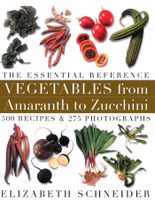Advertisement
Tamarillo, Tree Tomato
Solanum betaceum, formerly Cyphomandra betacea

Appears in
Published 2001
Also
tomate de árbol (Latin American)
Imagine that you’re tasting baba ghannouj, moussaka, or ratatouille for the first time. You’re curious to know more about the main ingredient. The cook brings out a glossy midnight-violet oblong capped with an exotic calyx. How pleasantly surprising that these smooshy dishes come from this sleek beauty!
Imagine the sequence in reverse, and you’ll have the tip of the tamarillo problem. Glimpsed in a specialty grocer’s basket—or the photo here—the polished surface glows, begging to be bitten into. But tamarillo’s peel is more like that of an eggplant (a close relative) than a plum. And symmetry and beauty must be forgotten if one is to enjoy the fruit, which is best when pureed. Think of sharp salsa instead of fresh fruit, and you’ll be on the right garden path—to the kitchen, to cook it or otherwise prepare it for eating.


